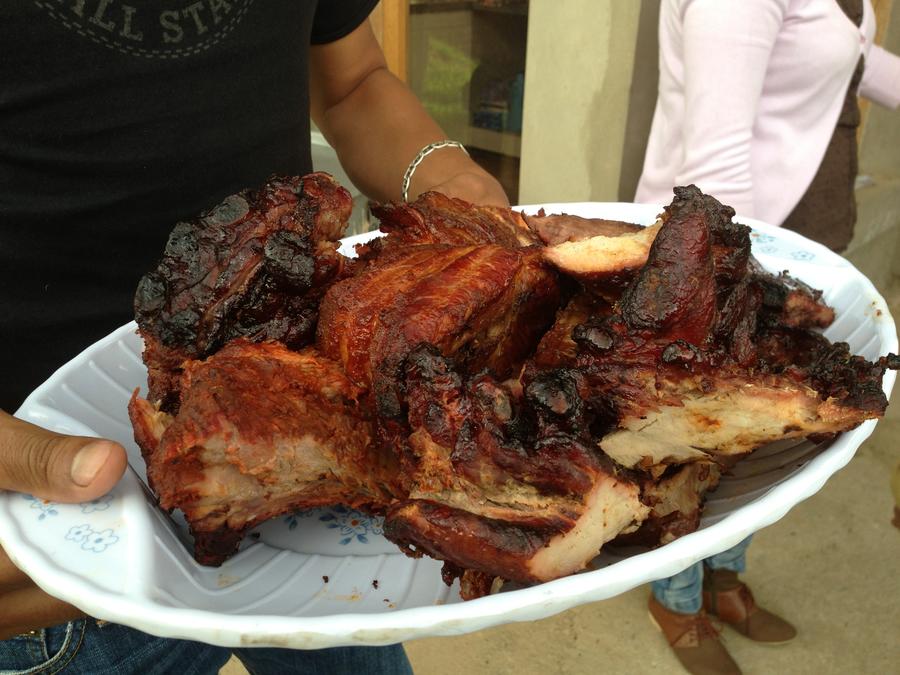Hi all,
I made my second smoking session with a poor tenderness result.
Please can you tell me how do you achieve tenderness?
Some info about how I did my smoking:
[if !supportLists]
[if !supportLists]1. [endif]Smoked the first three hours with 190 and then with 200 F.
[if !supportLists]2. [endif]I live above sea level; at this height level water boils at 197.6 F
[if !supportLists]3. [endif]Without a water or drip pan.
[if !supportLists]4. [endif]I did not use a heat diffuser.
[if !supportLists]5. [endif]I sprayed the meat with pineapple juice every hour.
[if !supportLists]6. [endif]I did not use foil.
[if !supportLists]7. [endif]I have problems with local butchers to find evenly cut ribs.
The result was:
Thanks,
Gustavo.
I made my second smoking session with a poor tenderness result.
Please can you tell me how do you achieve tenderness?
Some info about how I did my smoking:
[if !supportLists]
[if !supportLists]1. [endif]Smoked the first three hours with 190 and then with 200 F.
[if !supportLists]2. [endif]I live above sea level; at this height level water boils at 197.6 F
[if !supportLists]3. [endif]Without a water or drip pan.
[if !supportLists]4. [endif]I did not use a heat diffuser.
[if !supportLists]5. [endif]I sprayed the meat with pineapple juice every hour.
[if !supportLists]6. [endif]I did not use foil.
[if !supportLists]7. [endif]I have problems with local butchers to find evenly cut ribs.
The result was:
Thanks,
Gustavo.






